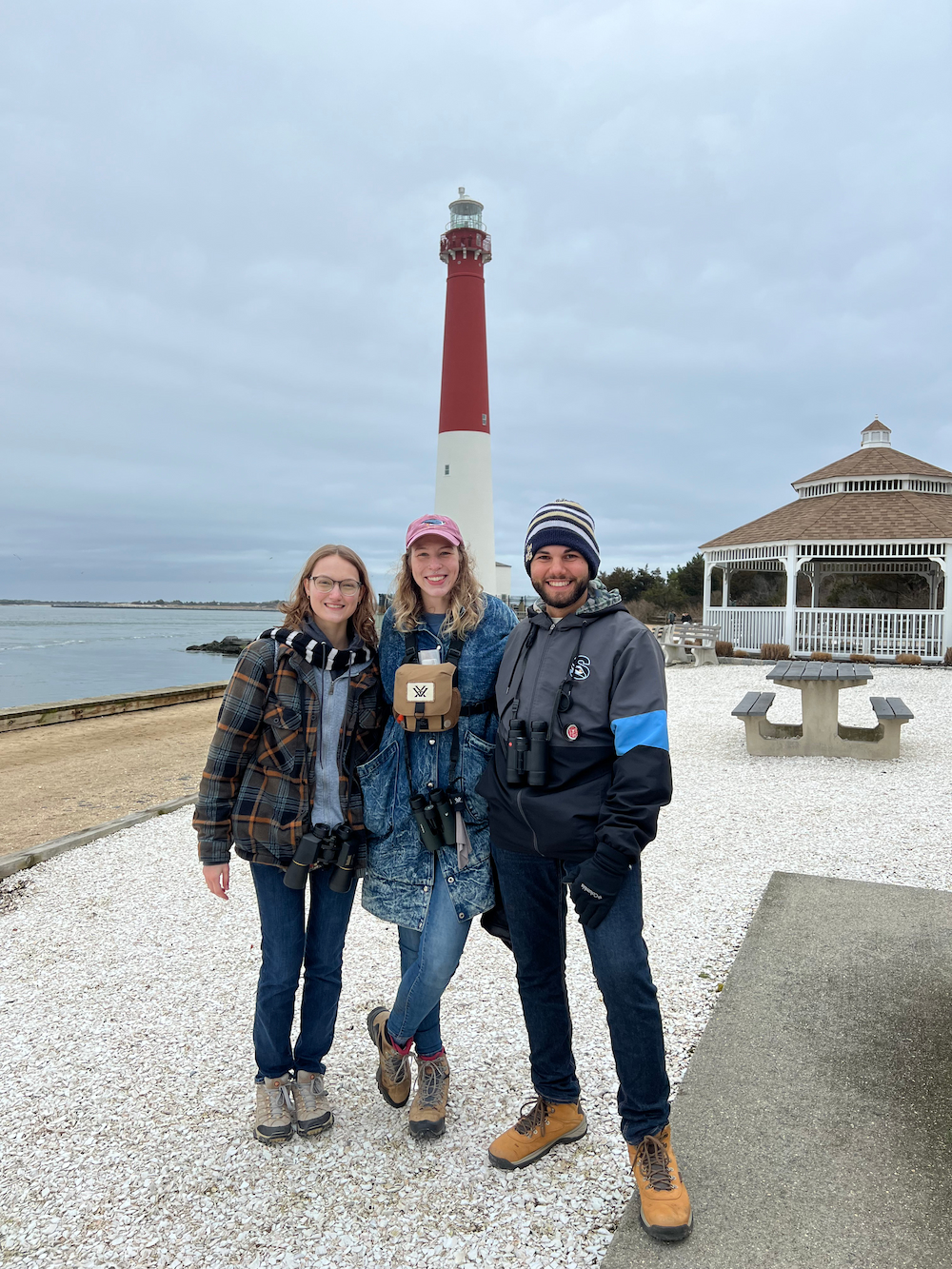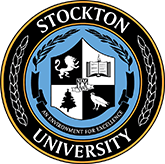Breanna Hawkins Builds A Community Around Birding

It’s a cold winter day, the kind that makes you want to stay inside, but the feeders outside the Unified Science Center are the place to be for birds—and birders.
A dozen middle school girls looked out a second-floor window to watch birds foraging on the ground, landing on feeders and creeping up tree trunks. Breanna Hawkins, a senior Environmental Studies and Language and Culture Studies major, narrated the busy performance unfolding before them.
Watch how the dark-eyed junco takes a tiny hop forward and quickly jumps back using its feet to stir up fallen seeds by scratching the leaf litter, she explains.
Then she points to a white-breasted nuthatch climbing down a tree using its pointy beak to pry for insects under the bark.
Watching birds isn’t the only way to identify them.
Birds Teach Us to Listen and Learn
Hawkins led a Tween Tech presentation to introduce young girls to the Cornell Lab of Ornithology’s Merlin app that uses AI to identify birds by their vocalizations. She is the first student to teach a workshop during the one-day STEM camp for 6th-8th grade girls.
She played the song of the white-throated sparrow and displayed its spectrogram, a graph of frequency over time.
On an x- and y-axis, the song looks like two long dashes followed by a series of shorter closely spaced dashes.
The darker areas are louder, and the lighter areas are fainter in sound, she explained.
Then she said, “Ohhhh sweet, Canada, Canada, Canada.”
The phrase sounds like the sparrow’s song and is a pneumonic device to help us identify birds by ear.
“Birdsong is kind of like a symphony. Eventually you can start picking out the instruments,” she said.
A flight call that sounds like “potato chip, potato chip, potato chip” is the American goldfinch.
The “Peter, Peter, Peter” call is the tufted titmouse.
After playing a game of matching birdsongs to their correct spectrograms, the group bundled up to test the Merlin app with real birds outside.
The free smartphone app allows users to record and create a spectrogram of what they hear in nature. As birds sing, the app identifies the species and begins making a list of what birds it hears.
Birds of a Feather Flock Together
Hawkins calls herself a “disabled queer birder” and loves the inclusivity of birding, how it brings people together and inspires us to protect the planet.
“Acknowledge who you are and embrace that. When I was a kid in middle school and high school, I was really striving to fit in with everybody else. I think everybody ultimately wants to find where they fit in,” she explained.
In the world of birding, “all are welcome.”
Hawkins discovered birding at a time when she really needed an outlet. She was diagnosed with fibromyalgia in 2021, and during intensive outpatient therapy, she was encouraged to go back to doing what she loved as a kid. So she went to the woods.
Just one bird walk at the Rancocas Nature Center turned her into a birder and opened so many doors. That winter, she helped co-lead a Project FeederWatch bird count at the center, where she is now an environmental educator.
"I knew nature and the environment would be therapeutic. When you find a new bird, it's exhilarating. You can feel the dopamine hit," she said.
When she started her Stockton journey, she realized others shared her interests and made it her goal to build a community around birding.
“Stockton is a campus that is well known for being a place for people who are interested in the environment,” she said.
One particular bird led her to the right people.
A Very Special Bird
She was walking from class with Justin Andell when they found a veery, a cinnamon-colored thrush, laying lifeless on the ground beneath the expanse of windows at the entrance to the Campus Center.
Seeing a reflection of sky, the bird flew into the glass.
They collected the specimen and walked it to the vivarium, where they met John Rokita, assistant supervisor of academic lab services, and Lester Block, a professional services specialist in the School of Natural Sciences and Mathematics. Their visit turned into a tour of the lab and Hawkins found a staff advisor for the Pine Barrens Bird Club she was working to create.
"Lester volunteered to be the advisor, and I couldn't have asked for a better person. He's so open, kind and knowledgeable," she said.
Rokita and Block have become mentors to Hawkins. "They're always willing and able to help. I can have a blurry photo, and they'll take one look and identify it right away. It's great to be around people like that. I hope to one day be at their level," she said.
"Who would have thought that carrying a dead bird around campus would have introduced me to so many friends," she said.
Members of the birding club help to monitor bird strikes on campus to collect data that would support the installation of more Feather Friendly dots on glass expanses.
Earning the Title of Goose Poop Queen
She joined the Stockton University Environmental Internship Program to gain varied experiences to help her find a career path.
“I wanted to try different things to figure out what I like and don’t like,” she said.
She has worked on internship projects for the New Jersey Department of Military and Veteran Affairs including monitoring tree swallow nesting boxes, coastal and woodland vegetation surveys and predator tracking surveys with game cameras.
During a goose survey at the Sea Girt National Guard Training Center, she earned the title of Goose Poop Queen. “We count how many pieces of goose poop are in 15 different plots throughout the summer, and it helps us keep track of the geese.”
Each experience has helped to shape her Stockton journey.
“Follow what you’re interested in. You will feel more fulfilled,” she said.
Story by Susan Allen


